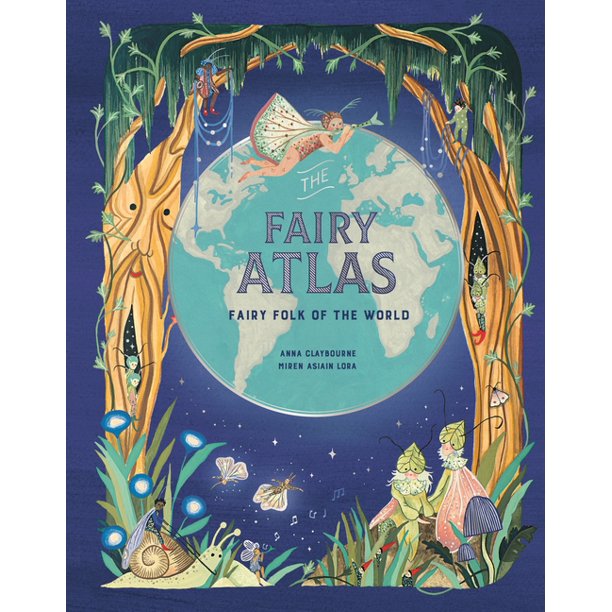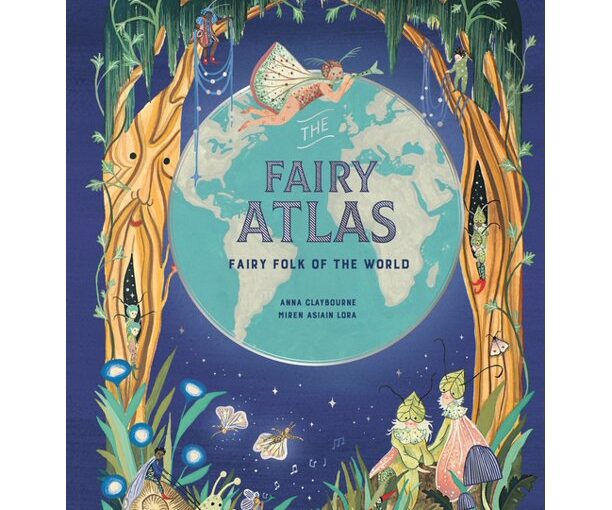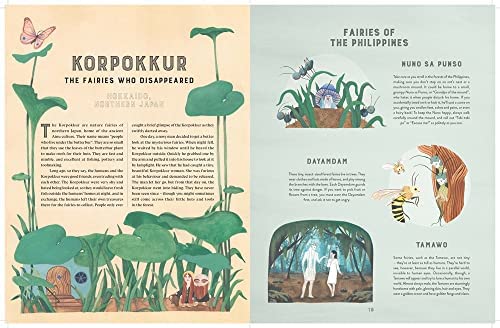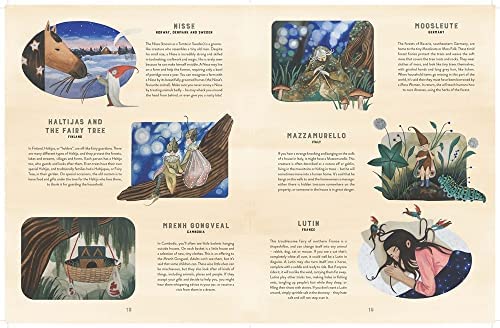I want to believe. We all have that Fox Mulder strain inside us for some issues; and for me, it’s a yearning to experience proof of ghosts, aliens, or mythical beings. The mythical beings are those folk legends that blur the line between the barely believable and those things that probably should exist. Fairies fall into that category and The Fairy Atlas, Fairy Folk of the World by Anna Claybourne with illustrations by Miren Asiain Lora is the illustrated guide to those creatures that just might be near you wherever you are.

It’s easy to imagine that sailors or explorers during the Renaissance believed in fairies. Whenever something couldn’t be explained or was otherwise mysterious you simply blamed a fairy. If a sailor disappeared at sea then it was easier to say he was seduced by tapairu, than to say that he drowned or the ship had an accident. If you’re in France and feel that something is off then you might be dealing with a lutin, a shapeshifter fairy who can become anything it wants but can also be kept away simply by sprinkling salt in your doorway.
However, all fairies aren’t as simple to defeat as a common slug. If your vision of a fairy is a lute-playing imp that carelessly dances around the forest then you’re only seeing a tiny percentage of that world. The Fairy Atlas looks at dozens of fairies from all over the world. Their sizes vary as much as the diverse personalities that make up these creatures that you’ve never probably seen in real-life.
In real life, you’ve seen influences of fairies in popular culture in ways that might not be on top of your mind. Do you remember Treebeard from The Lord of the Rings? He was an Ent, a giant walking tree that served as the protector of the people of Middle Earth. The Silk Cotton Tree is a giant walking tree that lives in the Caribbean. Supposedly at night the Silk Cotton Tree walks around, some locals say they’re leaving, but they always come back*. It begs the question of why any homeowner would plant one of these near their property, other than for the fairy tourism industry.
There are paragraph-length stories that go along with each of the multiple dozens of fairies around the world. The book lists some non-fiction accounts of fairy sightings, like in Chimney Rock, North Carolina, China, England, and more. The illustrations in The Fairy Atlas are engaging enough to draw in even the most reluctant of fairy people.
Fairies aren’t real- your adult brain tells you that. But it’s the magic of The Fairy Atlas that holds your hand as you willfully entertain the idea that these creatures and spirits are all around us. For those elementary school emerging readers, this is the kind of illustrated book that they’ll dive in and love, some more than others. The fairy reluctant people will enjoy the illustrations and look at the book when those judgmental type kids are no longer looking at them.
There are affiliate links in this post.







 Facebook
Facebook Twitter
Twitter Flickr
Flickr GooglePlus
GooglePlus Youtube
Youtube